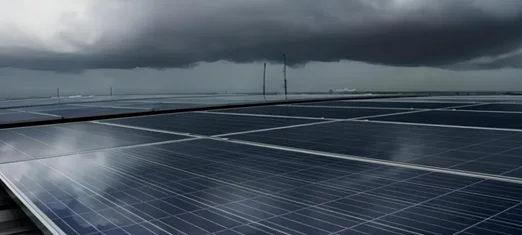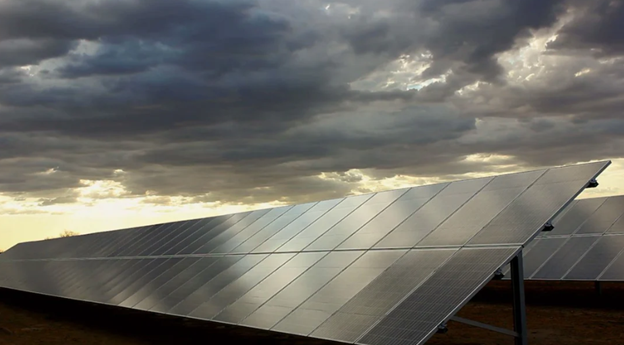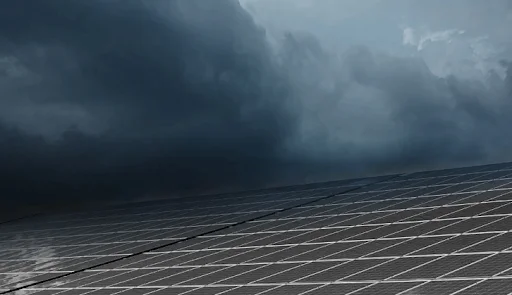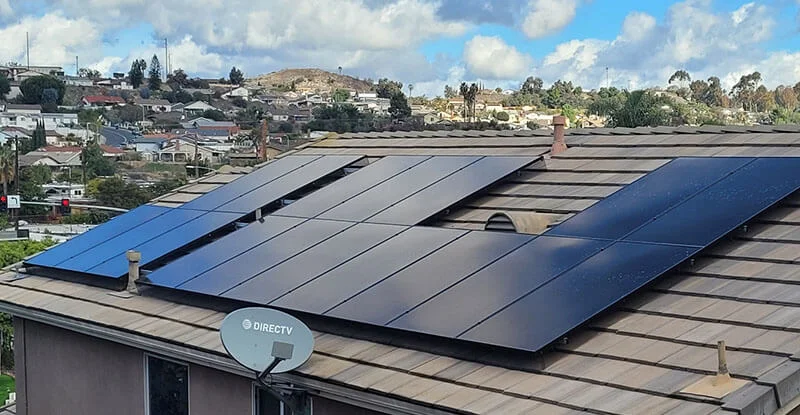Do Solar Panels Work in Cloudy Weather?

Solar panels are the most important source of natural energy. Sunlight is captured by custom-made panels for conversion into electricity using this method. It works optimally under direct sunshine and not when Mother Nature wears one of her moods and causes cloudy weather. Current developments in photovoltaic technology, combined with appropriate system design, have made it possible for even the most highly developed solar panels to continue to function in countries with clouds most of the time. This resilience guarantees them reliable and convenient energy resources, among the strongest aspects of sustainable solutions. This blog will discuss how efficient solar panels are in cloudy weather and what new technology they incorporate to make them an even more reliable energy source.
Understanding Solar Panel Performance under Specific Conditions
During cloudy days or at night, do solar panels work?
Solar panels continue to produce energy as long as the sun has its shining moments. It can generate energy using diffused light during cloudy days. Their efficiency will drop, but they can still operate at as much as 10-25% under heavy overcast and up to 50-80% under partly cloudy conditions. Technologies, such as monocrystalline solar panels and bifacial panels, are proving to be very beneficial while making absorption more effective, even in low-light conditions, which ensures even and continuous power output.
However, solar panels cannot generate energy—when there is no sunlight, there is no energy generation at night. Energy storage is essential in the lithium-ion battery for power storage during the day from excess sunshine. Nighttime outages or cloudy days are easier with hybrid grid power and solar energy systems.
How Do I Get Power at Night With Solar Panels?
Batteries play a very important role in the nighttime energy supply. Lithium-ion batteries are suitable because they have a reasonably efficient discharge rate and long life and make solar energy available for utilization without sunlight. A hybrid solar inverter system automatically resorts to grid electricity when the storage runs out of energy to offer a continuous flow of energy. Some systems also include backup generators for added security during tight supply.
Seasonal and Weather Impacts on Solar Panel Efficiency
Do Solar Panels Work in winter or Snow?
Solar panels work perfectly in the winter season. They work better when cooler since circuits have less electrical resistance, further energizing energy efficiency. People usually think that snow blocks sunlight temporarily when it is lying on panels, but reflective snow surfaces may be enhanced again by light capture once the snow is cleared away. Keeping the heavy snow clear from the panels as a part of routine maintenance will ensure continuous energy production.
Effect of Wind on Solar Panels
While the effect of wind on solar panel efficiency is indirect, it does have a cooling effect, avoiding overheating on the panels that can cause underperformance. However, strong winds pose risks to poorly installed systems. Durable installations require the installation of quality racking and mounting systems that can withstand harsh wind conditions.
How Much Power Can a Solar PV System Produce?
Factors relating to solar panel output include the intensity of sunlight, tilt angle, orientation of the panel, and location. On average, a solar photovoltaic system can provide enough energy to power a household over all twelve months, with even a bit of sunshine shining through in moderately sunny regions. A customized panel layout design with advanced technologies may benefit locations with scarce sunshine for energy yield enhancement.
Strategies to Maximize Solar Energy in Cloudy Regions

Although sunlight comes in limited quantities, there are various methods of optimizing output from solar energy:
Install High-Efficiency Panels
Monofacial n-type solar panels are the best for energy capture under low-light conditions, thus ensuring high performance even in cloudy weather.
Panel Orientation Adjustment and Tilt
Proper orientation and seasonal tilt adjustments should follow the sun's path to maximize sunlight absorption. An attached tracking system can harvest additional energy for high-energy production.
Extend System Capacity
Additional panels installed compensate for the reduction of light and improve performance, particularly in cloudy areas. Such 25-35% expansions increase the energy storage emulated by the ambient energy.
Set Up Battery Storage
Batteries store extra energy for future use to ensure an uninterrupted energy supply, even on cloudy days or at night. Newer models improve efficiency and lifespan.
Regular Maintenance
Cleaning helps remove dust, debris, and snow buildup on panels, which provides good light-catching ability. Performance dips are less likely in well-maintained systems.
Go for Double-Sided Panels
Bifacial n-type solar panels capture sunlight on both sides, making them useful for areas with reflected light, such as snow-covered regions.
Integrate Smart Monitoring Systems
Smart inverters and monitoring tools would optimize energy use by adjusting real-time system performance based on prevailing weather data.
Backup Power Solutions for Solar Systems
Backup power systems provide much-required energy reliability, especially when long, cloudy spells occur. Hybrid systems use solar energy from the grid to supplement electricity supply as long as sufficient solar production is available. An off-grid system will require battery storage conditions, which explains excess production during peak production hours used later.
Another effective strategy is integrating renewable energy sources such as wind turbines, whose complementary effect with solar energy will ensure the reliability of the energy supply. Wind turbines will complement solar energy to ensure energy supply at night or during cloudy conditions.
In addition, cost-effective incentives such as tax deductions and government rebates make installing solar energy systems more affordable. These systems pay off by saving energy bills over time while improving the environment.
The adoption of solar energy would ultimately lead to energy independence. By producing electricity from solar systems, one relies less on outside electricity sources and, at times, ensures the availability of electricity even during outages or rising fuel costs.
Conclusion
Dependable and versatile, solar panels provide excellent performance in all weather. When reliable installation and maintenance are coupled with modern technologies and energy storage solutions, an uninterrupted power supply is ensured, even when intermittently challenged. With the development of renewable energy, solar power is slowly evolving into the best option as an affordable way to decrease one's carbon footprint while increasing energy independence. Solar energy investment is an investment in a healthier future while reaping both green and long-term financial benefits.
See More Insights
Assessing the Durability of Solar Panels: Can They Withstand Hurricanes and Extreme Weather?
Join Us, Lead the Crown Change
Ready to power up? Partner with us. From comprehensive partner programs to media kits and warranty claims, all the support you need is just a click away.



